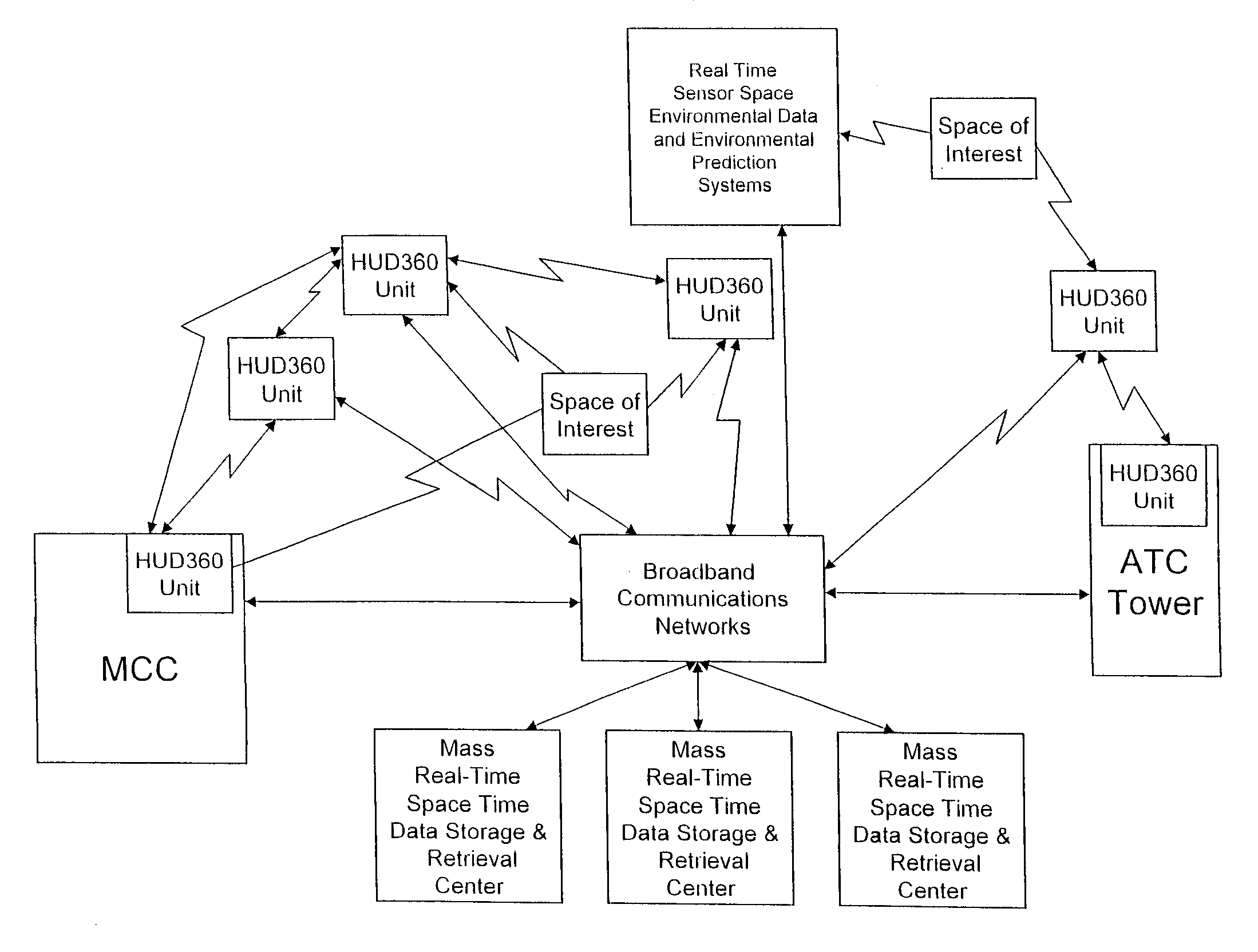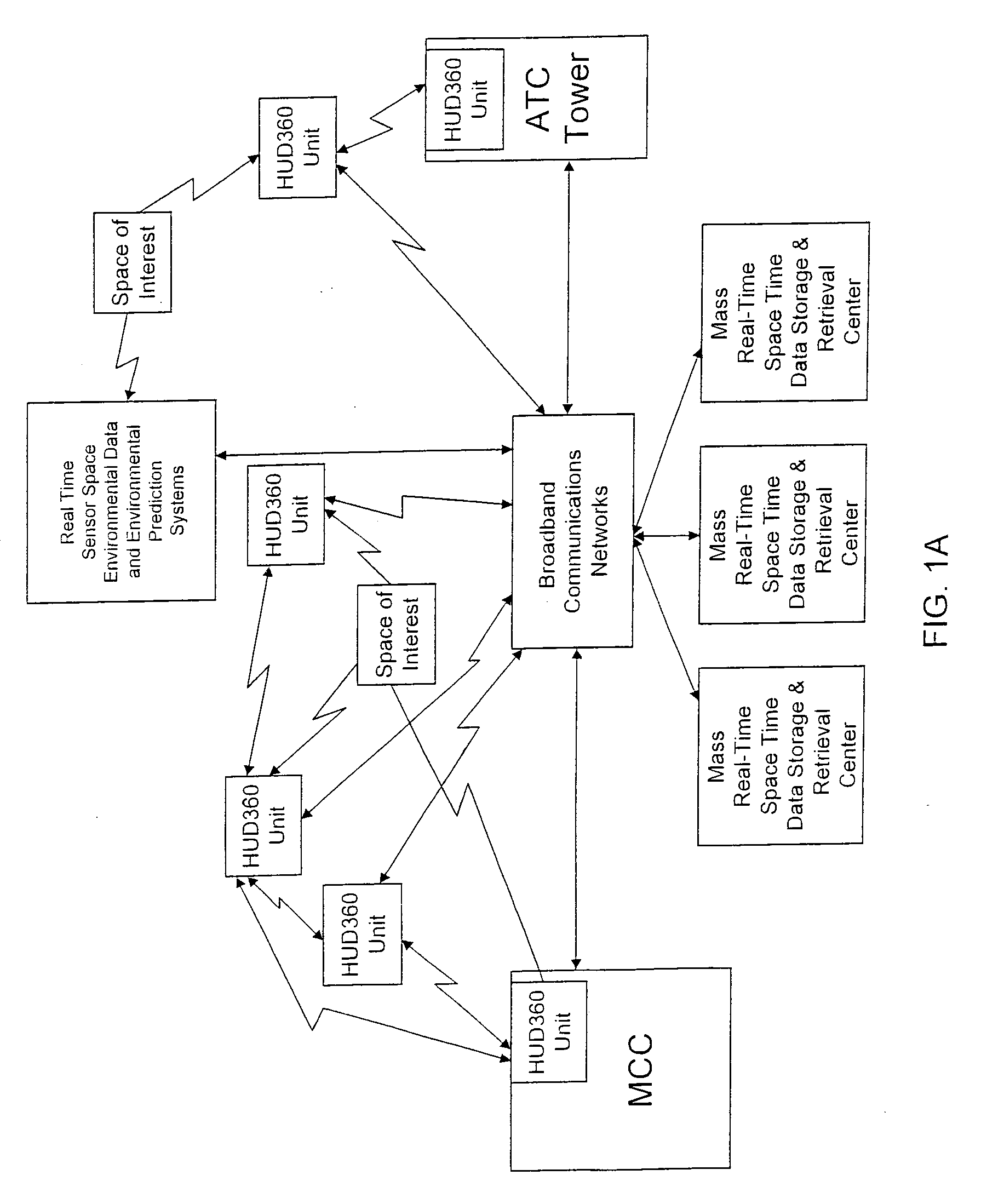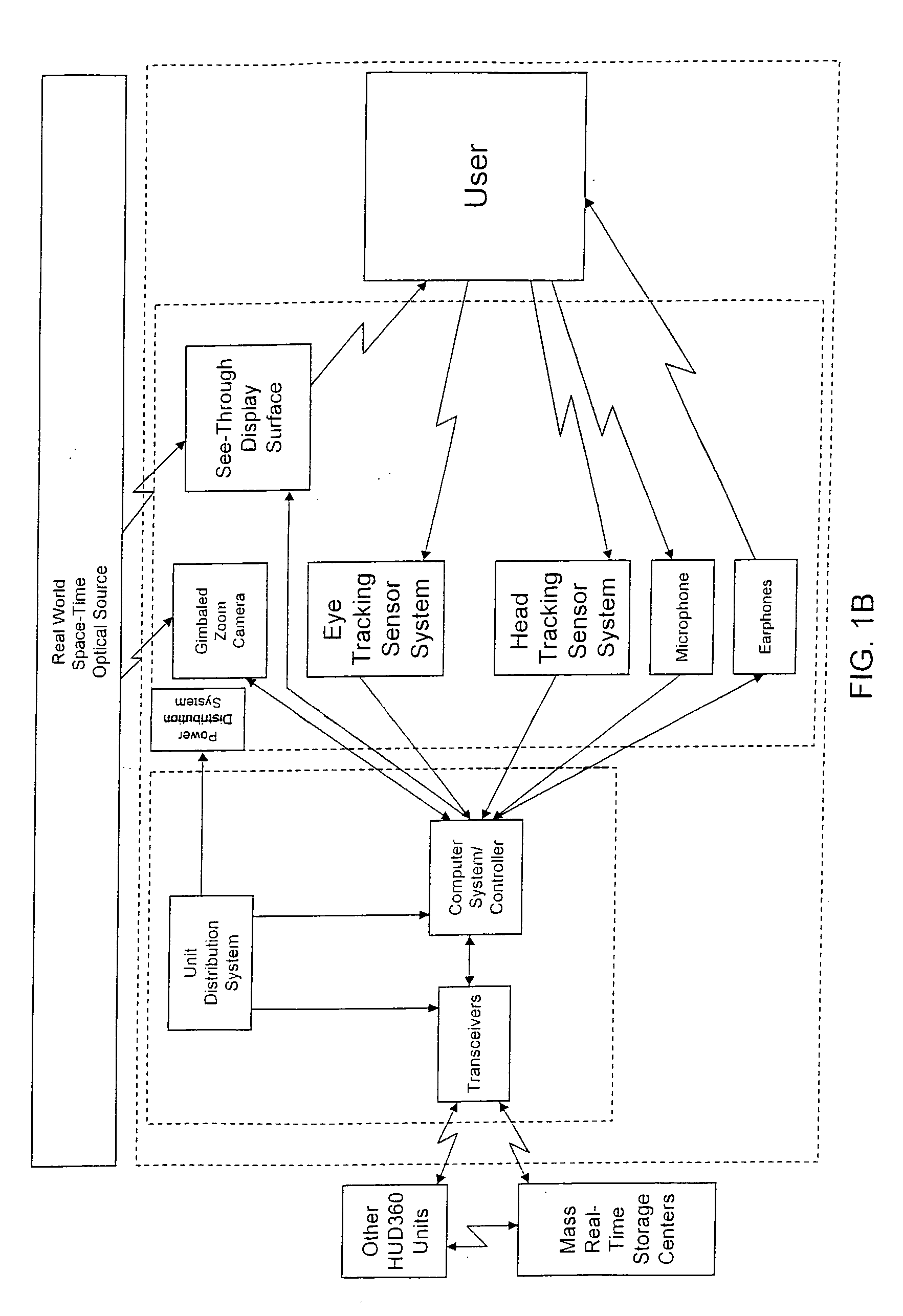Computer-aided system for 360 degree heads up display of safety/mission critical data
a technology of safety/mission critical data and computer-aided systems, which is applied in the field of aviation, can solve the problems of many critical perceptual limitations of humans piloting aircraft or other vehicles, doctors and medical technicians, and inability to know, and achieve the effect of optimal assessmen
- Summary
- Abstract
- Description
- Claims
- Application Information
AI Technical Summary
Benefits of technology
Problems solved by technology
Method used
Image
Examples
Embodiment Construction
[0061]A functional system block diagram of a HUD360 1 system with see-through display surface 4 viewed by a user 6 of a space of interest 112 is shown in FIG. 1A. In some applications, the HUD360 1 see-through display surface 4 can be set in an opaque mode where the entire display surface 4 has only augmented display data where no external light is allowed to propagate through display surface 4. Other features of the HUD360 1 system include a head tracking sub-system 110, an eye tracking sub-system 108, and a microphone 5 are all shown in FIG. 1A and all of which can be used as inputs with the ability to simultaneously control the augmented see-through display view 4, or to control another available system of the user's 6 choice. Also shown is a pair of optional earphones 11 which can also be speakers to provide output to user 6 that can complement the augmented output of the see-through display surface 4. Also shown in FIG. 1A is an optional gimbaled zoom camera that can be a lone ...
PUM
 Login to View More
Login to View More Abstract
Description
Claims
Application Information
 Login to View More
Login to View More - R&D
- Intellectual Property
- Life Sciences
- Materials
- Tech Scout
- Unparalleled Data Quality
- Higher Quality Content
- 60% Fewer Hallucinations
Browse by: Latest US Patents, China's latest patents, Technical Efficacy Thesaurus, Application Domain, Technology Topic, Popular Technical Reports.
© 2025 PatSnap. All rights reserved.Legal|Privacy policy|Modern Slavery Act Transparency Statement|Sitemap|About US| Contact US: help@patsnap.com



